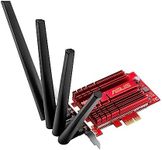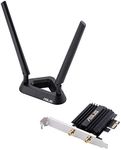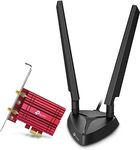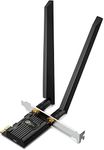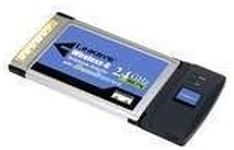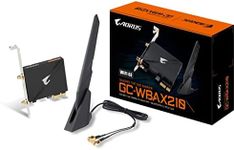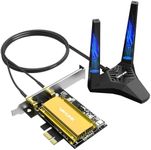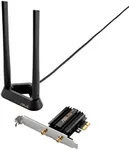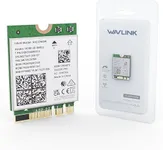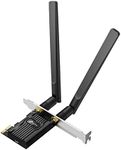Buying Guide for the Best Wi-Fi Cards
Choosing the right Wi-Fi card for your device can significantly enhance your internet experience. Wi-Fi cards, also known as wireless network adapters, allow your computer to connect to wireless networks. When selecting a Wi-Fi card, it's important to consider several key specifications to ensure you get the best performance and compatibility for your needs. Here are the key specs to look out for and how to navigate them.Wi-Fi StandardsWi-Fi standards determine the speed and range of your wireless connection. The most common standards are 802.11n, 802.11ac, and 802.11ax. 802.11n is older and offers decent speeds for basic internet use. 802.11ac provides faster speeds and better range, suitable for streaming and gaming. 802.11ax, also known as Wi-Fi 6, offers the latest technology with the highest speeds and efficiency, ideal for crowded networks and future-proofing. Choose a standard based on your internet usage and the capabilities of your router.
Frequency BandsWi-Fi cards operate on different frequency bands, primarily 2.4 GHz and 5 GHz. The 2.4 GHz band offers longer range but slower speeds and is more prone to interference. The 5 GHz band provides faster speeds and less interference but has a shorter range. Dual-band cards can operate on both frequencies, offering flexibility and better performance. If you need a stable connection for high-bandwidth activities like streaming or gaming, a dual-band card is recommended.
SpeedThe speed of a Wi-Fi card is measured in megabits per second (Mbps). Higher speeds mean faster data transfer rates. Basic cards may offer speeds up to 300 Mbps, suitable for general browsing and streaming. Mid-range cards can provide speeds up to 867 Mbps, ideal for HD streaming and online gaming. High-end cards can reach speeds over 1 Gbps, perfect for 4K streaming and heavy data usage. Consider your internet plan and usage to choose a card with appropriate speed.
Antenna TypeWi-Fi cards come with internal or external antennas. Internal antennas are built into the card and are less obtrusive, suitable for basic use and compact setups. External antennas can be adjusted for better signal reception and are ideal for improving range and performance in areas with weak signals. If you experience connectivity issues or need better range, opt for a card with external antennas.
CompatibilityEnsure the Wi-Fi card is compatible with your device and operating system. Check the card's interface (PCIe, USB, etc.) to match your computer's available slots. Also, verify that the card supports your operating system, whether it's Windows, macOS, or Linux. Compatibility ensures that the card will work seamlessly with your device without additional adapters or drivers.
MU-MIMOMulti-User, Multiple Input, Multiple Output (MU-MIMO) technology allows a Wi-Fi card to communicate with multiple devices simultaneously, improving overall network efficiency. This is particularly useful in households with many connected devices. If you have a busy network with multiple users streaming, gaming, or working online, a card with MU-MIMO support can help maintain fast and stable connections.
BeamformingBeamforming is a technology that focuses the Wi-Fi signal directly towards connected devices rather than broadcasting it in all directions. This results in a stronger and more reliable connection. If you need a stable connection for activities like video conferencing or online gaming, a Wi-Fi card with beamforming can provide better performance and reduced interference.
